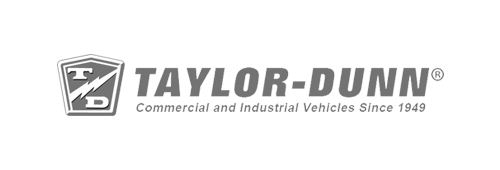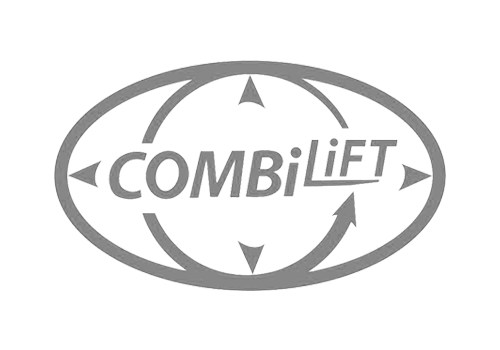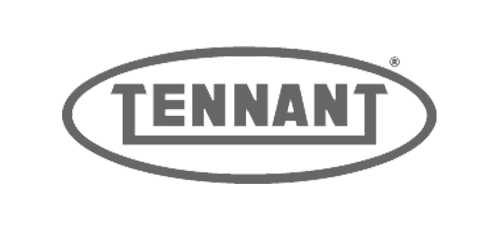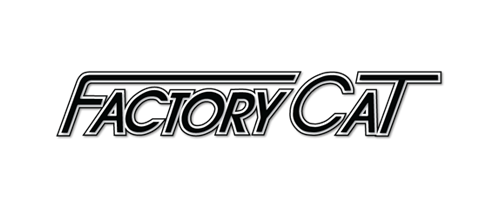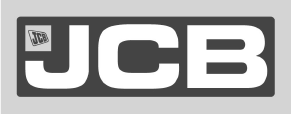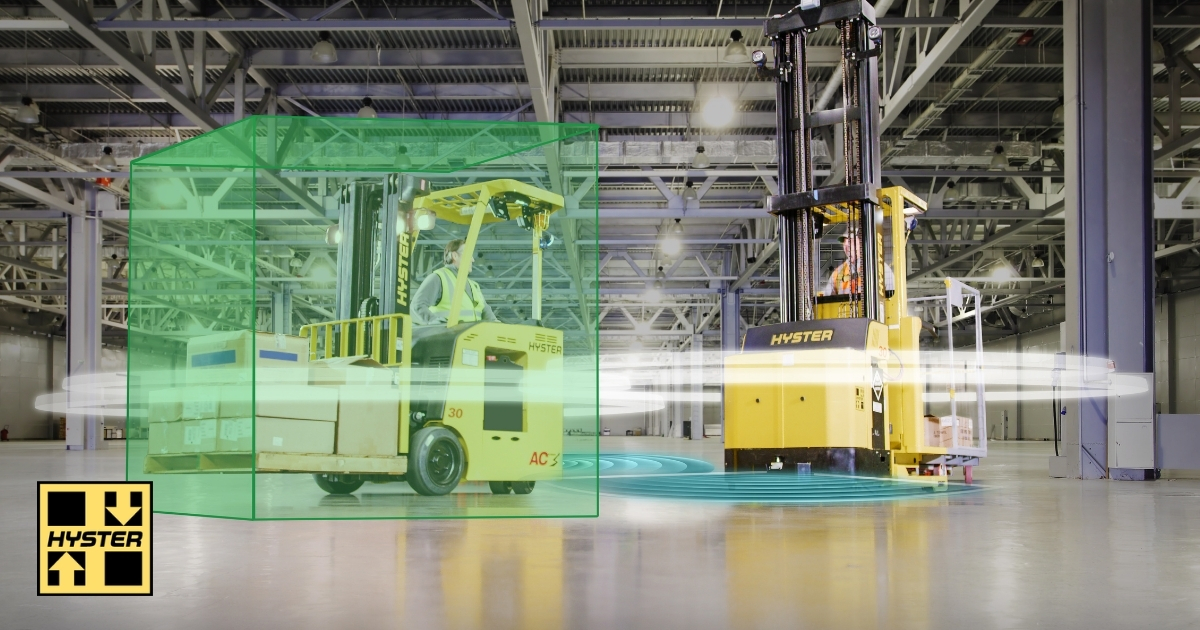
Your business relies on a functioning fleet of forklifts to move products safely and efficiently. Whether drivers are stacking pallets or moving items into delivery trucks, you need them and their forklifts to be at their best. But how can you keep track of all your forklift drivers throughout the day?
You need a way to manage forklift productivity without being in several places at once. While this may seem impossible, it’s now a reality for businesses around the world thanks to forklift telemetry. Learn more about what forklift telematics are and how they can increase the efficiency of your forklift fleet.
What Is Forklift Telemetry?
Forklift telemetry is the modern-day solution for managing a fleet of forklift drivers in a small to medium-sized business. A forklift fleet can be large, chaotic and difficult to track. Drivers zip all over the warehouse, doing their specific tasks for the day and working around other drivers doing their own tasks. Forklift drivers often outnumber managers. This makes giving the proper attention to each forklift driver a challenge. If everyone finishes the day’s tasks, it’s mission accomplished. Or is it?
Barriers to Forklift Efficiency
A crew may finish all the day’s tasks before heading home, but every team has room for improvement and increased efficiency. With a more efficient forklift fleet, you could plan to get more done in one day. Any current lack of performance in your fleet could stem from the drivers or the forklifts themselves. There are many variables that factor into the performance of your forklift fleet, including the following:
- Forklift malfunctions
- Driver error
- Unapproved breaks
- A lack of communication among team members and managers
- Accidents
There are even more factors aside from those listed, and when they occur in the same workday, it could be enough to set the whole team back several hours. Then everyone has to catch up to meet the expected quota. Events like these often happen without your knowledge, so you may not know why your drivers are not accomplishing their daily tasks.
How Telematics Can Help
Now, there’s a way to remove the mystery from your forklift fleet’s productivity. Forklift telemetry uses forklift fleet management software to track various fleet statistics. Instead of relying on in-person interactions to track your fleet, you can use forklift telemetry to get the answers you need using real-time statistics and information. This allows you to address the most important issues as they appear or even catch an issue before it develops into a problem.
Forklift telemetry is a way to place accountability on your forklift drivers while streamlining the way you help them throughout the day. Your drivers will know you’re tracking their activities, which can motivate them to strive for better performance. They may think twice before doing something that could affect the team’s productivity. On your end, you can make sure every driver has a forklift to use and knows what they’re doing for the day.
Without telemetry, fleet managers need to keep a close watch on each forklift driver to make sure they are performing their tasks without any issues. This is expensive and time-consuming. Implementing forklift telemetry for your fleet can help you cut forklift fleet service costs and increase team productivity with less manpower.
How Does Forklift Telemetry Work?
Telemetry is the recording and transmitting of real-time data from a source to an information technology (IT) system. Telemetry allows people at the IT location to check various statistics of the source without being present to observe the activity. Wireless technology transmits data from the source to the IT system using Wi-Fi, Bluetooth, radio, GPS or other wireless mediums. This wireless transmission of data allows people in many industries to analyze the performance of their source with ease.
Telematic systems do this by taking the data gathered from the source and fitting it into the software’s graphics and displays. People at the IT location get to choose how the software represents the data, so they can use it for their purposes. In the case of running a forklift fleet, you may want to see how much freight has been moved during a shift or if any forklifts have broken down. You can view this information by glancing at the screen of your connected device.
With forklift telematics, you get to track several aspects of your forklift fleet in real time. To do this, you’ll install some hardware on each of your forklifts. This hardware may display information to help the driver achieve their goals for the day. The most important thing it does is send you the stats you need to manage your fleet and know how each driver is doing.
Information Telematics Can Provide
By attaching certain sensors and GPS devices to various parts of each forklift, you can get plenty of helpful information. This can include the following:
- Equipment summaries: Receive comprehensive summaries of your equipment. This can involve performance metrics as well as information about the health of the forklift.
- Hourly costs and return on investment (ROI): Money-based stats are important because you’re in business to make a profit. Being able to see how your hourly costs compare to the money you’re making can give you a moment-by-moment idea of your ROI.
- Service summaries: Keep a record of service summaries so you know the extent of maintenance each forklift has received. You’ll stay up-to-date with your forklifts so you know exactly what is going on with each one. Avoid unexpected issues popping up without any warning.
- Alerts and notifications: One of the best parts of forklift telemetry is staying current with your forklift fleet. You can know about any issues within seconds of them happening thanks to immediate notifications and alerts. If you have the telemetry software on your phone or tablet, you can keep track of your fleet from anywhere in the building.
- Individual forklift details: Want to keep a closer eye on employees or know how everyone is doing on a personal level? You can check various stats on individuals to take a closer look at how your crew is performing.
- Planned maintenance information: Keep your forklifts maintained to skip the downtime that comes with malfunctions and mechanical errors. With forklift telemetry, you can keep track of maintenance days for your forklifts. You can know which forklifts are available and which are not at all times.
- Service or rental requests: You’ll be able to keep track of service and rental requests for each of your forklifts. Some days, you may need to rent extra forklifts to make up for ones that are in the shop for repairs. With your telematics system, you can manage each rental and service request to keep each day organized.
How to Manage a Fleet of Forklifts
Managing a fleet of forklifts has evolved quite a bit since the days when managers needed to make constant rounds to know how each forklift driver was performing. Even the most present managers could miss things. It was difficult to know when forklifts would break down or if drivers were doing what they were supposed to do. Today you can manage your forklift fleet by using forklift telemetry for your business.
Use your forklift telemetry system to its fullest potential with the following tips:
- Train your employees in proper material handling protocol: A successful forklift fleet starts with the right training. Make sure your employees understand proper handling protocol. It’s crucial that each driver knows how to use the right lifting techniques and understands the limits of their forklift. This can reduce the chances for accidents and the resulting downtime that comes from them.
- Stay up-to-date with costs: Use your forklift telemetry system to keep track of your profits. If you notice a decrease in your ROI or your profit margin, you may need to look closer at the data to see where you’re coming short.
- Work forklift maintenance into your fleet’s schedule: Another key to a successful forklift fleet is having forklifts that are ready for action. Use forklift telematics to schedule maintenance appointments and keep track of the status of each of your forklifts. This can ensure your drivers have forklifts to operate at all times.
- Make decisions based on data: The more you become familiar with forklift telematics, the more you’ll be able to use it to make informed decisions. Use the data you collect to determine where your fleet can improve and where it’s succeeding. Instead of taking chances with your decisions, use data and real metrics to move forward to achieve your business goals.
How to Maximize Forklift Fleet Performance
Here are some of the ways forklift telemetry can help you increase the productivity of your forklift fleet:
- Keep watch over your entire fleet wherever they are throughout the workday: You can keep track of your drivers’ locations and activities whenever you want. Open up the telematics software to get an overview of how each driver is performing. Are they in motion? Are they where they should be at that specific time? All this information and more is available with forklift fleet telemetry
- Set productivity benchmarks to manage your spending on each truck and driver: As forklift drivers do their work, they are spending company money while making money for your company. You can better manage the amount of money you’re spending on each forklift and driver with the help of forklift telemetry. Set productivity benchmarks for your drivers to achieve, and you may see an increase in performance. This can help you manage the company’s spending on each forklift driver as they see them meet and exceed their productivity benchmarks.
- Use real data to make adjustments to your fleet to maximize your ROI: The data you receive through your telematics system can have a real impact on your ROI. Your business spends a lot of money on forklift drivers and the forklifts themselves. Forklift telemetry can tell you if you’re getting a good return on your investment or if you need to make some changes to achieve peak profits and returns.
- Determine the right size of your fleet to avoid having more drivers on the floor than you need to get the job done: With forklift telemetry, you can see if your forklift team needs more help or if you need to make cuts due to overstaffing. Having too many drivers on the floor can result in a chaotic work environment. Increase efficiency and safety by staffing the right amount of people every day.
- Reduce downtime by scheduling planned maintenance for each forklift and keeping track of equipment efficiency: Any time a forklift goes down for maintenance during the workday, you’ll experience a decrease in productivity. Forklift malfunctions mean your drivers are unable to perform their jobs. With forklift telematics, you can keep track of the status of your forklifts and schedule maintenance for each one. That way, you can stay a step ahead of surprise issues and keep your drivers operating as scheduled.
- Consolidate your equipment management under one system instead of relying on different vendors for each forklift brand: Without telematics, you may have to rely on each forklift brand’s company for inspections and maintenance. Some vendors could be better than others, leaving you with a mixed experience and added stress trying to keep all your forklifts in working order. Consolidate your equipment management under a single telematics system to take ownership of your company’s forklifts. You’ll know which forklifts need maintenance and which are ready to go.
- Make things easier on your accounting team by having all expenses for each forklift accessible in one easy-to-use system: Accounting teams have their work cut out for them, especially if they have to balance the expenses of each forklift on an individual basis. Forklift telemetry makes things easier for your accountants by consolidating all forklift expenses in one convenient location. This can make budgeting and figuring expenses easier for your accountants. You can experience more control over your budget as you continue to enjoy the financial freedom offered through telematics services.
Invest in Your Forklift Fleet With Burns Industrial Equipment
Burns Industrial Equipment is the answer to your forklift needs. We provide the greater Pittsburgh and western Pennsylvania, and the greater Cleveland and northeast Ohio areas with high-quality forklifts that can meet the demands of your business. If you want to take the next step in your forklift fleet’s productivity, you can trust us for fleet management solutions.
With our help, you can increase your fleet’s productivity, safety and efficiency. Enhance your company’s workflow and ROI with Burns Industrial Equipment. Contact us today for more information.


